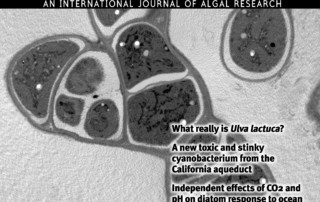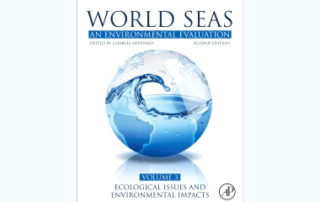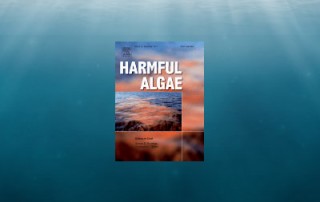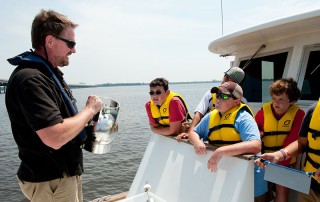Center News
A new genus and species of toxic cyanobacteria
The center’s latest research (J. Phycol. 55: 509-520) describes a new genus and species of toxic cyanobacteria, Odorella benthonica, which was discovered in a California aqueduct, in collaboration with fellow researchers at Texas A&M. Valerie Lapham of the Center for Electron Microscopy and Elle Allen’s TEM image was chosen for the cover of the June issue of [...]
An Environmental Assessment of the North and South Carolina Coasts
Drs. Mike Mallin, JoAnn Burkholder and others provide an environmental assessment of the Carolina coasts in Chapter 16 of the World Seas: An Environmental Evaluation, Volume 1: Europe, The Americas and West Africa, edited by Charles Sheppard.
Dr. Burkholder recognized for high impact publications
Congratulations to Dr. JoAnn Burkholder, who was recently recognized for being an author on three of the top 10 cited papers of all-time published in Harmful Algae, and one of the top 10 in the last 5 years!
NC State Floating Classroom
Burkholder, College of Agriculture and Life Sciences professor of aquatic ecology and director of the Center for Applied Aquatic Ecology (CAAE), and Reed, oceanography researcher with CAAE, have taken hundreds of students out on the water for hands-on learning over the last three years, thanks to grant funding from the Burroughs Wellcome Fund. Now in their first year of a three-year renewal – the only renewal available through the fund – Burkholder and her team are eager to find backers to continue the North Carolina Floating Classroom Program long-term.
Learning through Play: The Augmented Reality Sandbox
It is my pleasure to talk to the implementors of such an application: NC State Researchers Dr. Robert Reed and Josh Mathis from the Center for Applied Aquatic Ecology constructed an Augmented Reality Sandbox with funding from the Burroughs Wellcome Fund. Oliver Kreylos, a computer scientist studying 3D scientific visualizations and computational geosciences at UC Davis designed and programmed the AR Sandbox software, supported by a National Science Foundation grant. The Augmented Reality Sandbox allows learners to ‘move mountains’ in the sandbox and with the wave of a hand create rainfall and see how these interventions affect the resulting water flow, thereby fostering the understanding of watersheds and subsequently, our role in protecting water quality.





